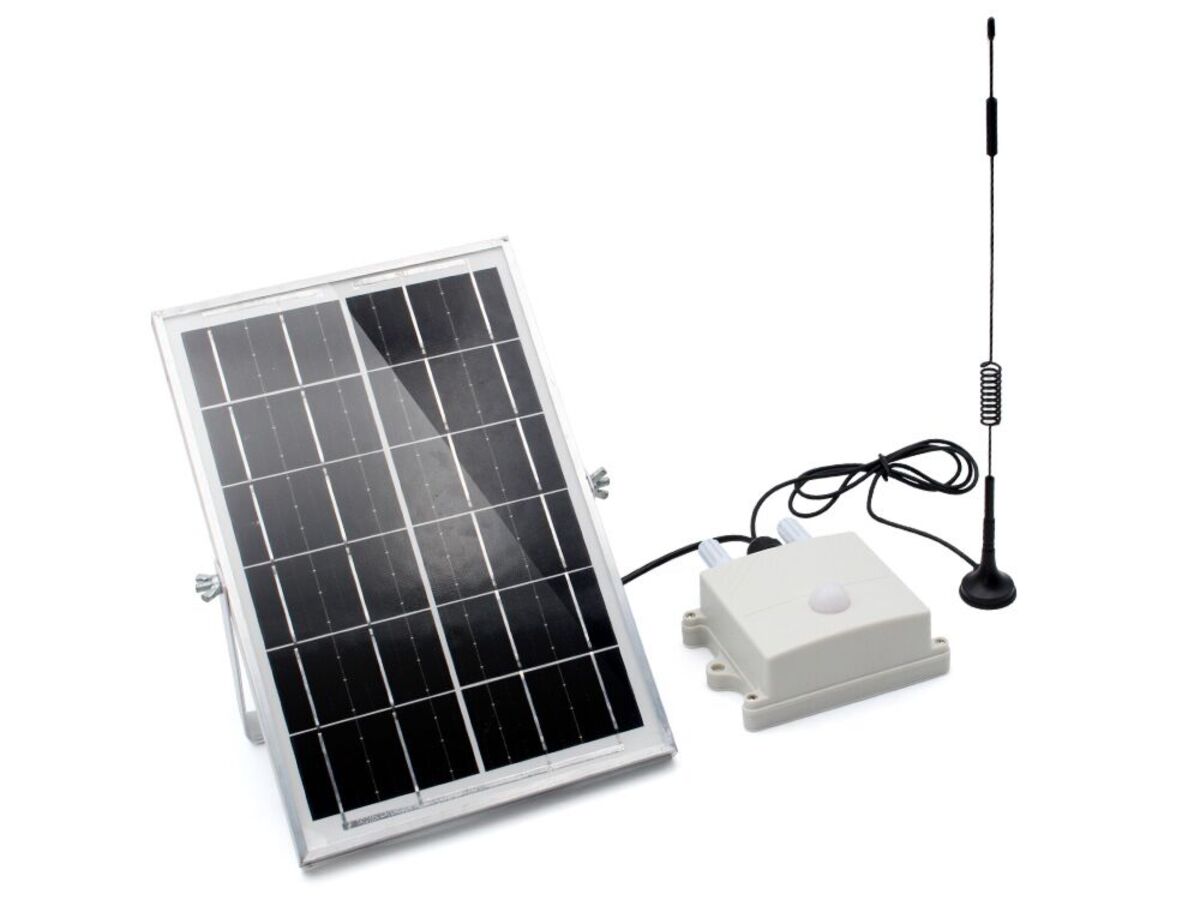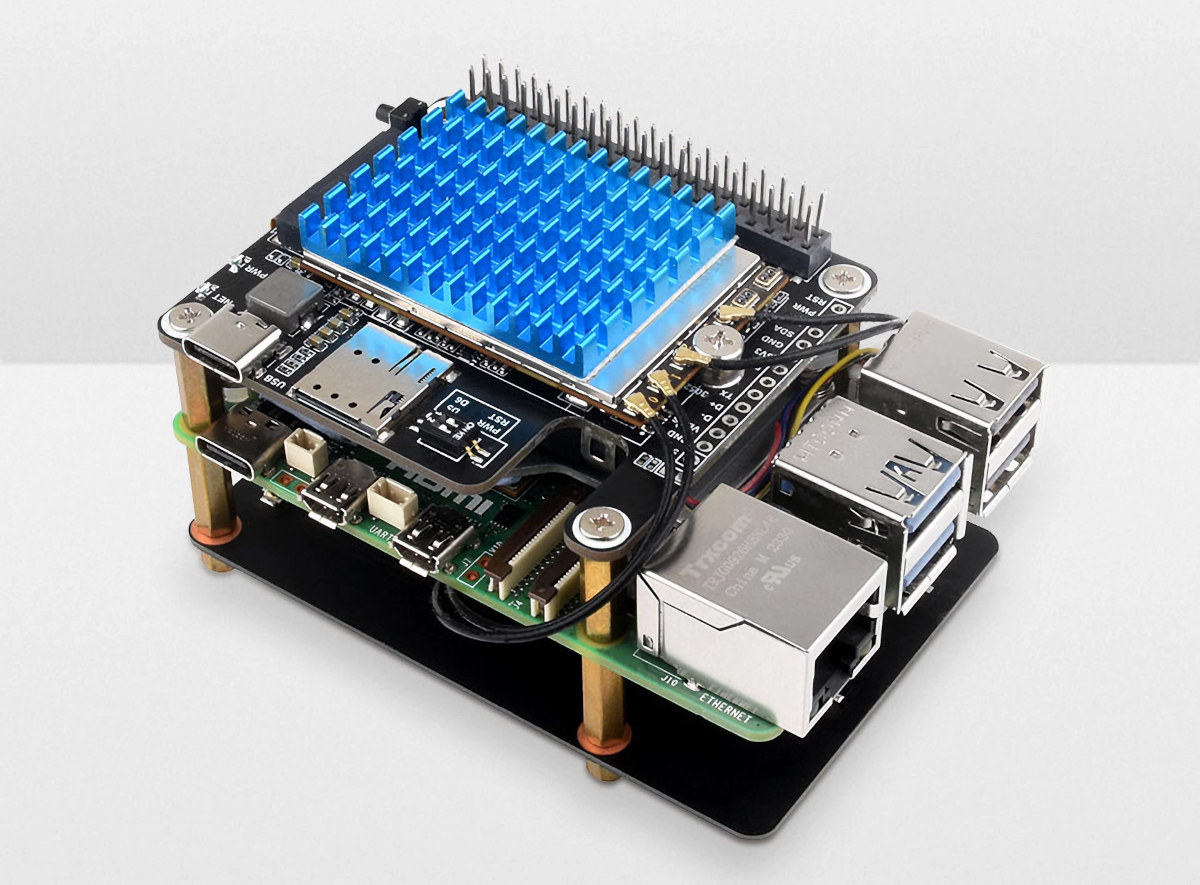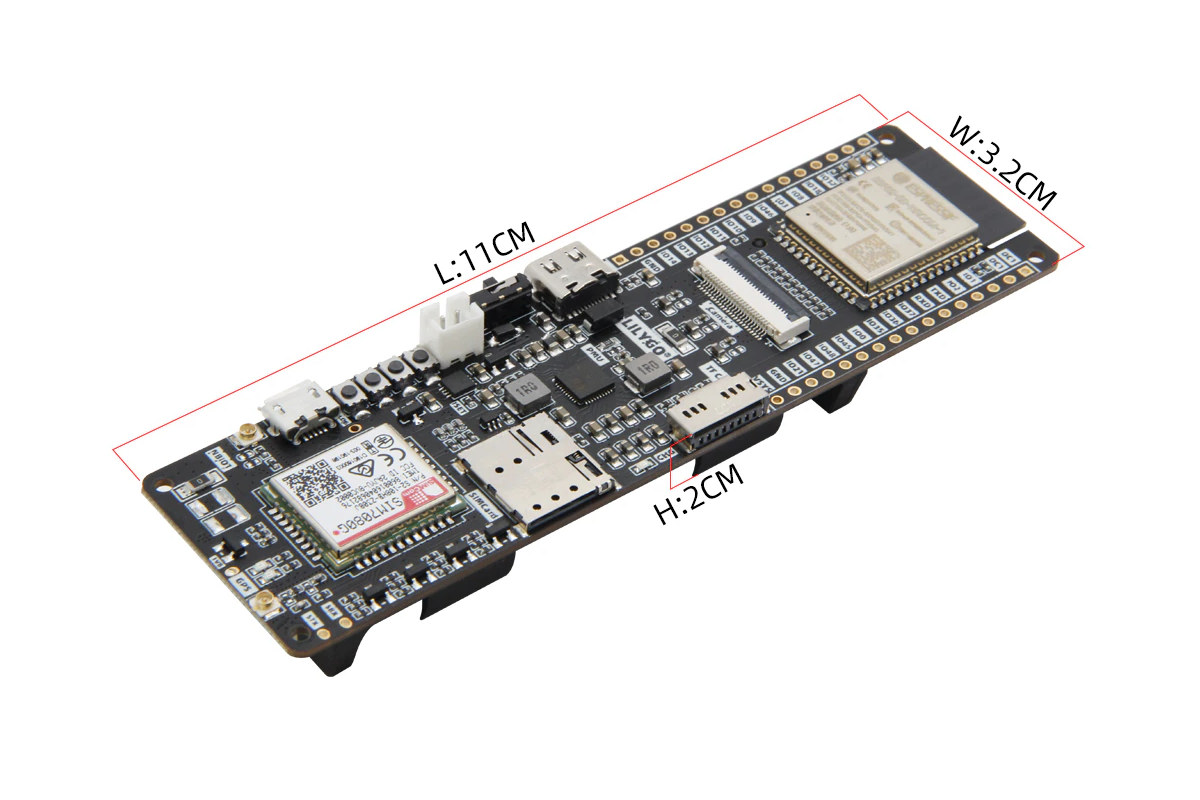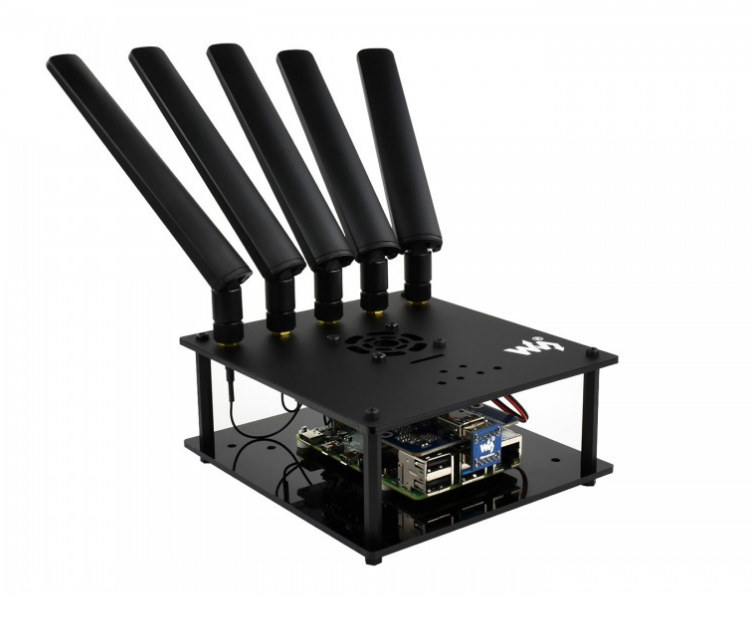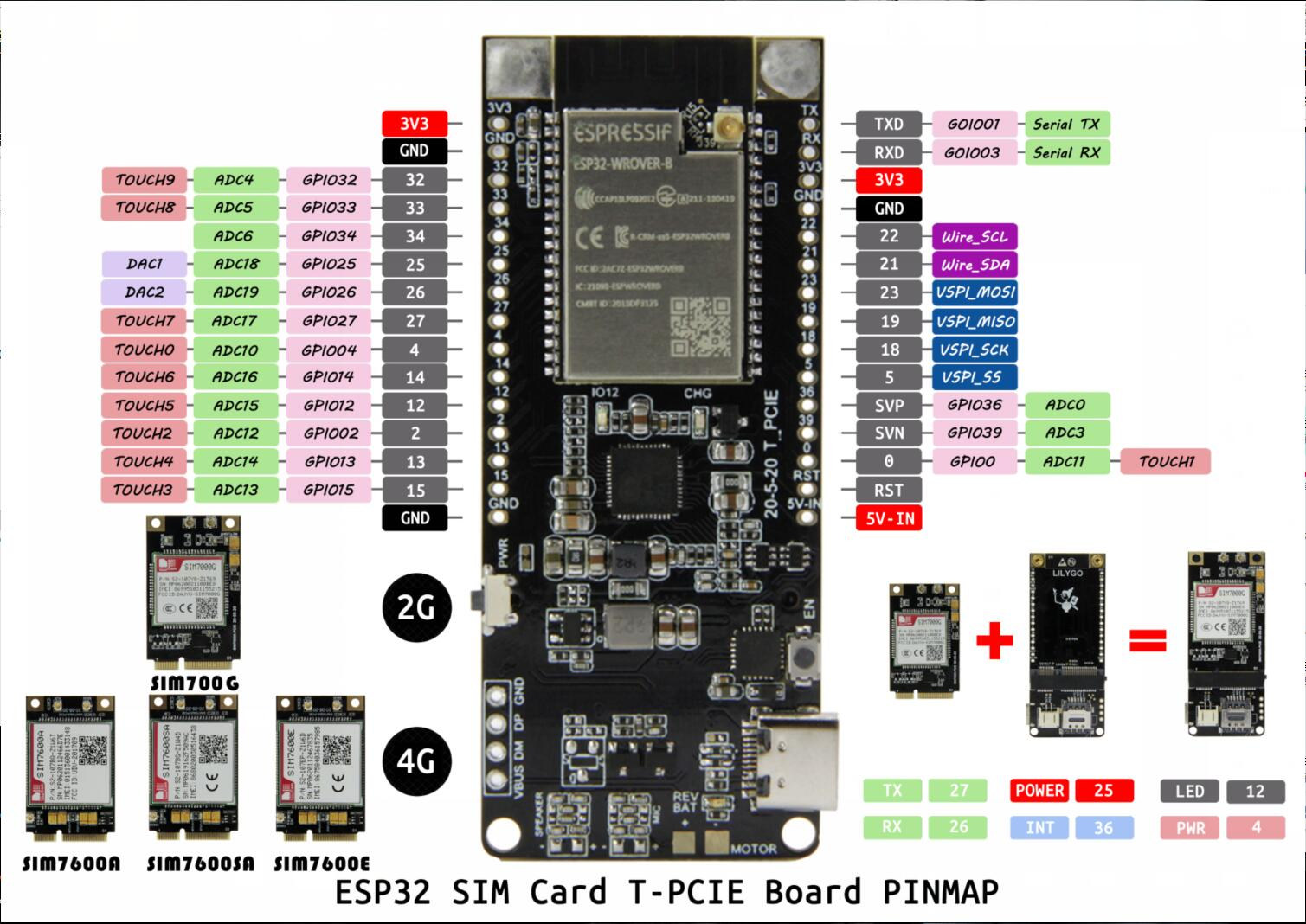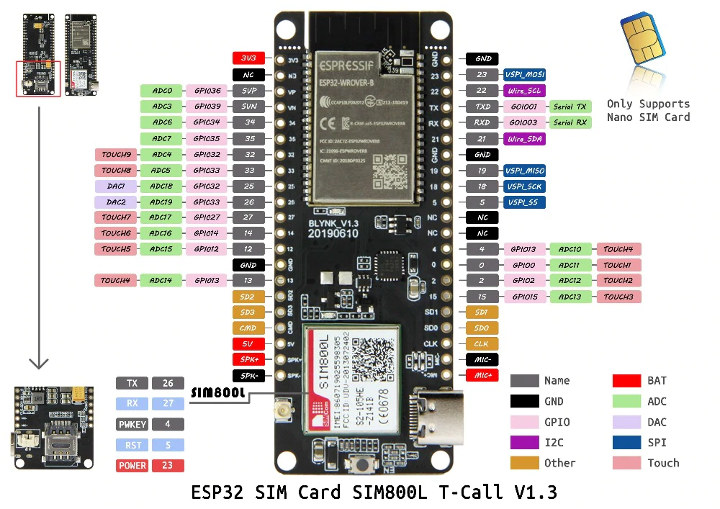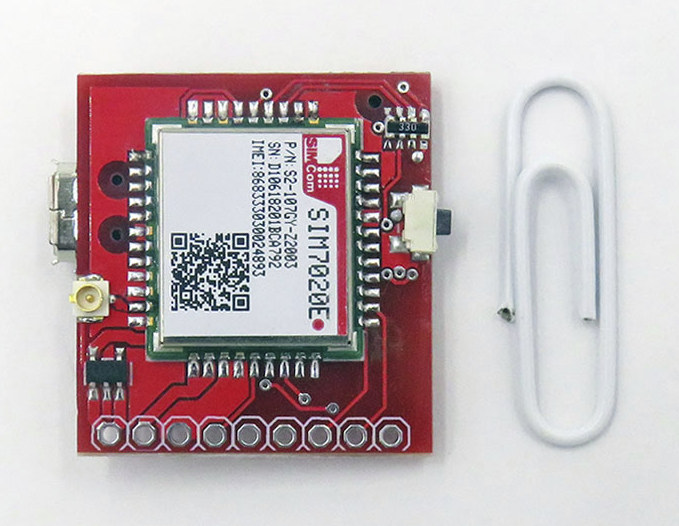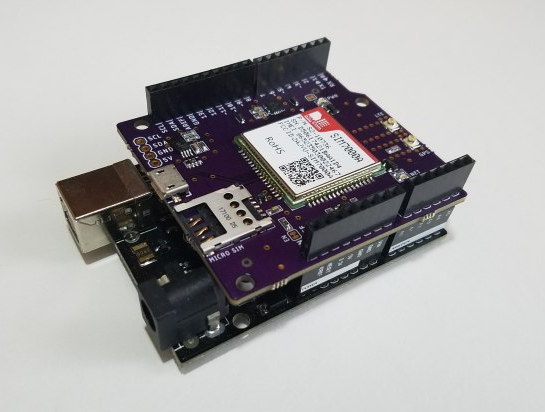The NBIOT/LTE-M Air Monitor is a solar-powered device that utilizes a combination of ESP32-S3 and SIM7080G modules for remote environmental monitoring. It monitors and transmits environmental parameters such as temperature, humidity, CO2, TVOC, and light intensity using low-power wide-area network (LPWAN) technology ensuring efficient power consumption, durability, and reliable data transmission. Previously we have written about similar environment monitor devices like the Airlytix ES1, Sonoff SC WiFi, V-Air Monitro, and devices like Arduino MKR IoT Carrier Rev2, Radair mini gateway, and Nicla Sense ME designed for environment monitoring applications. Feel free to check those out if you are interested in this type of product. NBIOT/LTE-M Air Monitor specification Wireless Module – ESP32-S3-WROOM-1-N16R8 Espressif Systems ESP32-S3R8 – Dual-core Tensilica LX7 @ up to 240 MHz with vector instructions for AI acceleration, 512KB RAM, 8MB PSRAM Storage – 16 MB flash Wireless – 2.4 GHz WiFi 4 and Bluetooth PCB antenna Cellular connectivity Module – SIMCom SIM7080G LTE Cat […]
PCIe to 5G HAT+ for Raspberry Pi 5 takes SIMCom and Quectel 5G modules
Waveshare PCIe to 5G/4G/3G HAT+ for Raspberry Pi 5 is a PCIe Gen 2 x1 to M.2 HAT+ designed to take 5G modules from SIMCom and Quectel and a Nano SIM card. The kit ships with a 4-in-1 PCB antenna, associated cables, a heatsink, a 4cm 16-pin PCIe FPC cable, a 40-pin female header, and a fixture set for mounting. We had previously written about the SixFab 5G HAT for the Raspberry Pi 5 with a Quectel RM502Q-AE M.2 module, but this specific kit still relies on the USB 3.0 interface. The Waveshare kit is the first 5G kit using the PCIe interface from the Raspberry Pi 5 interface and it is offered with Quectel RM502Q-AE, RM530N-GL, RM520N-GL, or SIMCom SIM8262E-M2, SIM8262A-M2 M.2 3042/3052 modules. Waveshare PCIe to 5G HAT+ specifications: M.2 Key B socket for 3042/3052 5G modules with PCIe interface 16-pin PCIe FPC connector directly connected to the […]
IoT board supports WiFi, Bluetooth, NB-IoT, Cat-M and GNSS with ESP32-S3 and SIM7080G modules
LILYGO T-SIM7080G-S3 is an ESP32-S3 WiFi and Bluetooth IoT board with a SIMcom SIM7080G LTE Cat-M (eMTC), NB-IoT, and GNSS module for low-power long-range connectivity and asset tracking. The board also comes with a 18650 battery holder, a solar panel input, a microSD card slot, a camera port, and several I/Os and provides an alternative to the TTGO T-Beam ESP32 board that relies on LoRaWAN for long-range connectivity instead. LILYGO T-SIM7080G-S3 specifications: Wireless modules Espressif ESP32-S3-WROOM-1-N16R8 module with ESP32-S3 dual-core LX7 microprocessor @ up to 240 MHz with Vector extension for machine learning, 16MB flash, 8MB PSRAM, WiFi 4 and Bluetooth 5 LE/Mesh SIMCom SIM7080G global multi-band Cat-M and NB-IoT module with GNSS Bands: Cat-M – B1/B2/B3/B4/B5/B8/B12/B13/B14/B18/B19/B20/B25/B26 /B27/B28/B66/B85 NB-IoT – B1/B2/B3/B4/B5/B8/B12/B13/B18/B19/B20/B25/B26/B28 /B66/B71/B85 Data rate Cat-M – Uplink: 1,119 Kbps, downlink: 589 Kbps NB-IoT: Uplink: 150 Kbps downlink: 136 Kbps LTE RF Power Class: 5 (Typ. 21dbm) GNSS – GPS, GLONASS, […]
Raspberry Pi Gets 5G Cellular Connectivity with Snapdragon X55 Powered HAT
The Raspberry Pi board has long been able to connect to cellular networks either via USB dongles or 3G or 4G LTE HATs that often include GPS as a bonus. But you can now connect your Raspberry Pi 4 or other RPI SBC with a 40-pin header to 5G networks thanks to Waveshare SIM8200EA-M2 5G HAT for Raspberry Pi powered by Qualcomm Snapdragon X55 multi-mode multi-band modem offering 5G/4G/3G cellular connectivity. As we can see from the photo, the 5G add-on comes as part of a cool-looking kit with bottom and top acrylic plates, spacers, a cooling fan plus five antennas for cellular and GNSS connectivity. But the HAT itself integrates a SimCOM SIM8200EA-M2 M.2 module and offers the following specifications: Compatibility – Works with Raspberry Pi boards with a 40-pin GPIO extension header Cellular Connectivity SIM8200EA-M2 core module based on Qualcomm Snapdragon X55 platform with multi-mode multi-band support 5G/4G/3G […]
ESP32 Board Features mini PCIe & SIM Card Sockets for 4G LTE Connectivity
LilyGO has launched yet another ESP32 WiFi & Bluetooth IoT board. As its name implies, TTGO-T-PCIe board includes a mini PCIe socket that coupled with a SIM card socket allowing users to insert a 4G LTE mPCIe card to add cellular connectivity. The company also offers optional SIM7000 2G or SIM7600 4G LTE modems that come with LTE and GPS antennas. You should probably be able to add other cellular mini PCiE, as well as other wireless mPCIe modems for LoRa, Satellite communication, etc… (Finally most probably not) TTGO-T-PCIe board specifications: Wireless module – ESP32-WROVER-B with ESP32 dual-core wireless SoC with 520KB SRAM, WiFi and Bluetooth with on-board antenna, as well as 4MB flash, and 8MB PSRAM Connectivity 802.11 b/g/n WiFi 4 up to 150 Mbps (ESP32) Bluetooth 5.1 LE (ESP32) Optional wireless cards via mPCIe socket (I2C and UART), SIM card slot for 2G and 4G LTE cellular networking […]
$15 TTGO T-Call Board Combines ESP32 WiFi & Bluetooth SoC with SIM800 GPRS Module
LilyGo has launched several TTGO boards usually based on Espressif ESP8266 or ESP32 over the years. Here’s another that could be useful if 2G cellular networks have not sunset in your country: TTGO T-Call. The new board combines ESP32 WiFi & Bluetooth WiSoC with SIMCom SIM800L GPRS module, and also happens to rely on a USB-C port for power and programming instead of the more common micro USB port on this type of hardware. TTGO T-Call board (BLINK_V1.3) specifications: Wireless Module – ESP32-WROVER-B based on ESP32 dual core Xtensa processor @ 240MHz with 520kB SRAM on-chip, 4MB QSPI flash, 8MB PSRAM Connectivity – WiFi 4 802.11 b/g/n (2.4 GHz) up to 150 Mbps Bluetooth 4.2 Classic + LE Cellular – 2G GSM/GPRS via SIMcom SIM800L module + Nano SIM card slot USB – 1x USB-C for power and programming (via CP2104) Expansion – 2x 21-pin headers with UART, SPI, SDIO, […]
SIM7020E 4G NB-IoT Mini Development Board Sells for Just $14
We now have plenty to choose from when it comes to NB-IoT development boards or shields, but so far pricing has not been very attractive, and the cheapest NB-IoT solution I found so far was probably Dragino NB-IoT Bee, a XBee compatible board going for $23. But this morning, I saw an even cheaper NB-IoT board with SIM7020E 4G NB-IOT Mini development board selling for $14.30 on Electrodragon. Not quite the price of 2G solutions, but we’re getting there. Board specifications: NB-IoT Module – SIMCom SIM7020E module working globally with B1/B3/B5/B8/B20/B28 bands supported Nano SIM card holder and u.FL connector for NB-IoT Expansion – 9-pin unpopulated 2.54mm pitch header with 2x UART (3.3V / 5V), ADC, Boot, 3.3V, 5V and GND USB – 1x micro USB port that can be recognized by PC, but as Electrodragon puts it: “not sure how to use it”. Misc – Net LED, power key […]
LTE Cat M and NB-IoT Shield for Arduino Features SIMCom SIM7000-Series Module (Crowdfunding)
We’ve already covered several NB-IoT (and/or LTE Cat M1) Arduino shields with products like RAK Wireless WisLTE, Sixfab Arduino NB-IoT shield, or AIS NB-IoT shield, which all happen to come with Quectel modules. A young self-taught engineer has decided to make his own Arduino eMTC/NB-IoT shield, but based on a SIMCom SIM7000-series module instead of a Quectel one found in the other aforementioned products. Board specifications: Cellular Module (one of the list depending on your location) SIM7000A LTE Cat M1 & NB-IoT module certified for AT&T and Verizon in the US SIM7000C Cat M1/NB-IoT module with 2G/2.5G fallback for the Chinese market SIM7000E Cat M1/NB-IoT module with 2G/2.5G fallback for the European market Note: The developer is also looking into SIM7000G module which should work globally, but the option is not available for now Micro SIM card holder GNSS – GPS/GLONASS with 2.5m accuracy supported by SIMCom modules Antenna – […]


